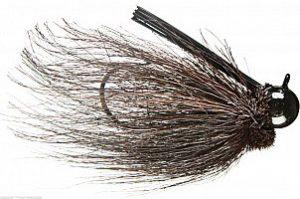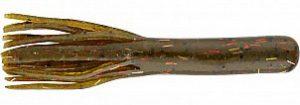Wild and Scenic Middle Allegheny Smallmouth
The Allegheny that rolls to a stop in Pittsburgh Pennsylvania – the broad industrialized river that carries the cheers of Steelers and Pirates fans from downtown stadiums – reclaims its natural state in the middle reaches beginning at East Brady and stretching 120-odd miles upriver to Kinzua Dam. And that means a shallow, free-flowing river with islands, boulders and gravelly ledges that’s prime habitat for smallmouth and several other species.
The Middle Allegheny had Wild and Scenic status bestowed on it by Congress in 1992 in recognition of its largely pristine state and lack of commercial development. Boat launches at Parker and Emlenton provide easy access to the reach for Pittsburgh-area fishermen.
Veteran guide and outdoor writer Jeff Knapp (Keystone Connection guide service, www.keystoneconnection.com) specializes in targeting smallmouth from East Brady upriver to Kennerdell and fishes out of a versatile 18-foot jet boat so he can easily navigate the skinniest of summer flows, or just cover a lot of river miles any time of year to find fish.
Part of the great appeal of the Middle Allegheny is the diversity of the fishery, as Knapp explains:
“The smallies top out around 20 inches, going around four pounds. The walleye fishing is also good, particularly in spring and late fall. Northern pike are numerous. Muskies are present: we catch them up to the 30-pound range, though they appear to be more plentiful further up river from Tionesta to Kinzua Dam. The water from Kinzua down to Warren is also good trout water.”
Late season smallmouth fishing begins when water temperatures drop into the low 50s:
“The smallmouth begin to move from the moderate current areas of early fall to protected low-current areas where they likely spend the winter. Higher river flows make this happen sooner. Seasons that bring a slow progression from fall to  winter – and fairly stable river levels – stretch the window of opportunity; conversely, early winter weather shuts things down early. I’ve found peak water temperatures to be in the 45-degree range. I’ve taken smallies in water as cold as 37 to 38 degrees, though they’ve been pretty lethargic.”
winter – and fairly stable river levels – stretch the window of opportunity; conversely, early winter weather shuts things down early. I’ve found peak water temperatures to be in the 45-degree range. I’ve taken smallies in water as cold as 37 to 38 degrees, though they’ve been pretty lethargic.”
Effective lures in late fall and winter are bucktail jigs such as a 3/16th-ounce Jimmy D’s Riverbug in olive, tube jigs,  and three- to four-inch Twister-Tail style grubs such as Galida’s Grubz, presented on a leadhead. Small jerkbaits worked with very subtle twitches and lengthy pauses can also work well. All lures should be worked low and slow, maintaining contact with the bottom wherever possible.
and three- to four-inch Twister-Tail style grubs such as Galida’s Grubz, presented on a leadhead. Small jerkbaits worked with very subtle twitches and lengthy pauses can also work well. All lures should be worked low and slow, maintaining contact with the bottom wherever possible.
Knapp is a tremendously amiable and knowledgeable guide and like many people in this part of the world views a lot of life through the prism of hockey and football. As he explained on a recent float that brought  smallmouth, walleye, and northern pike to the boat at leisurely interludes, summer fishing, when the Allegheny runs shallow enough to wet wade most of the river, can throw out Lemieux days – that’s 66 smallmouth and above; late
smallmouth, walleye, and northern pike to the boat at leisurely interludes, summer fishing, when the Allegheny runs shallow enough to wet wade most of the river, can throw out Lemieux days – that’s 66 smallmouth and above; late  fall and winter, hit it right and you might have a Rocky Blier kind of day – 20 some fish, with the potential for a smallmouth you’ll remember well past the end of football season.
fall and winter, hit it right and you might have a Rocky Blier kind of day – 20 some fish, with the potential for a smallmouth you’ll remember well past the end of football season.
Story by Craig Buddo
Contact Jeff Knapp @ keystoneconnectionguideservice@gmail.com or Key Stone Connection Guide Service

